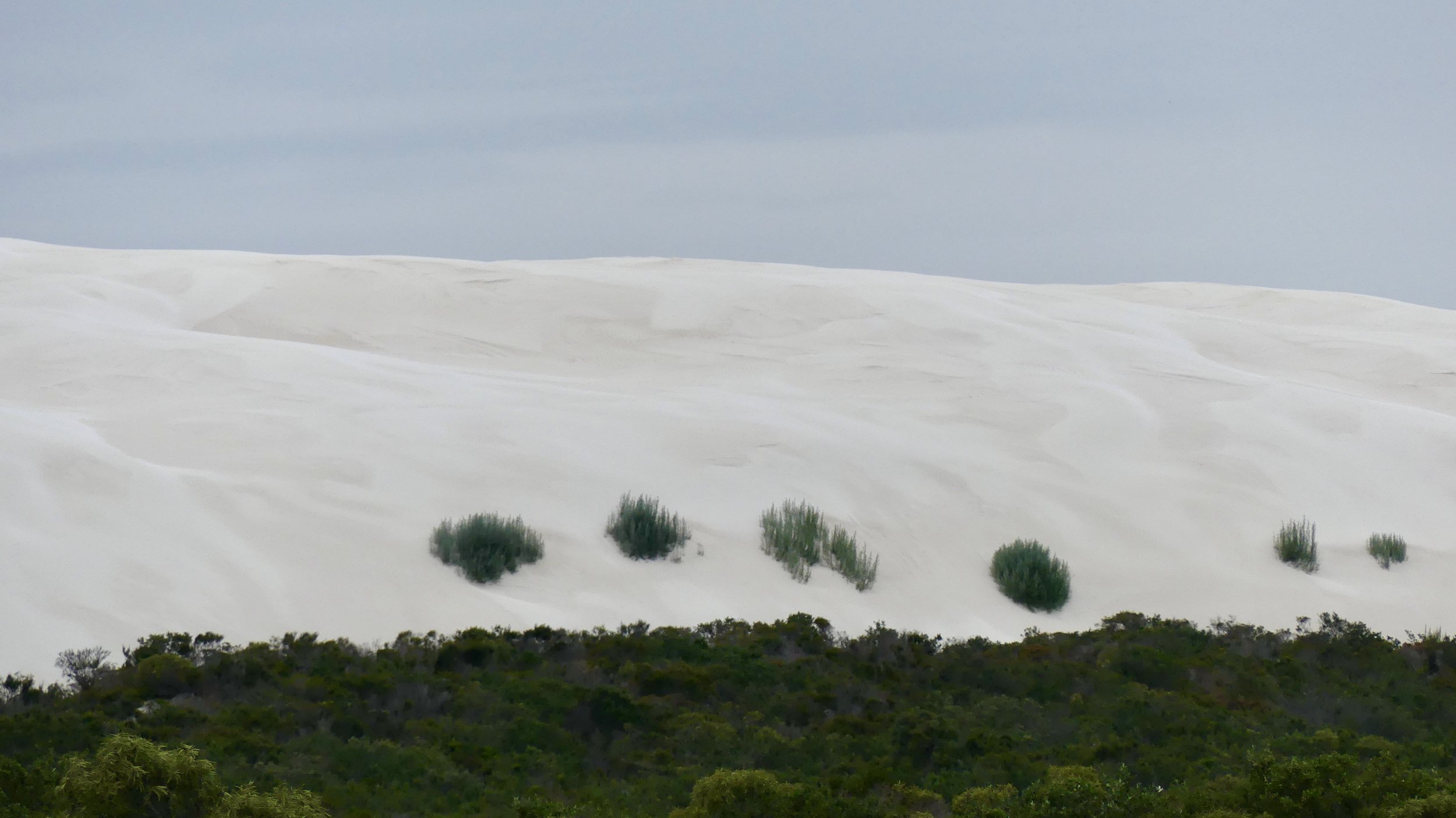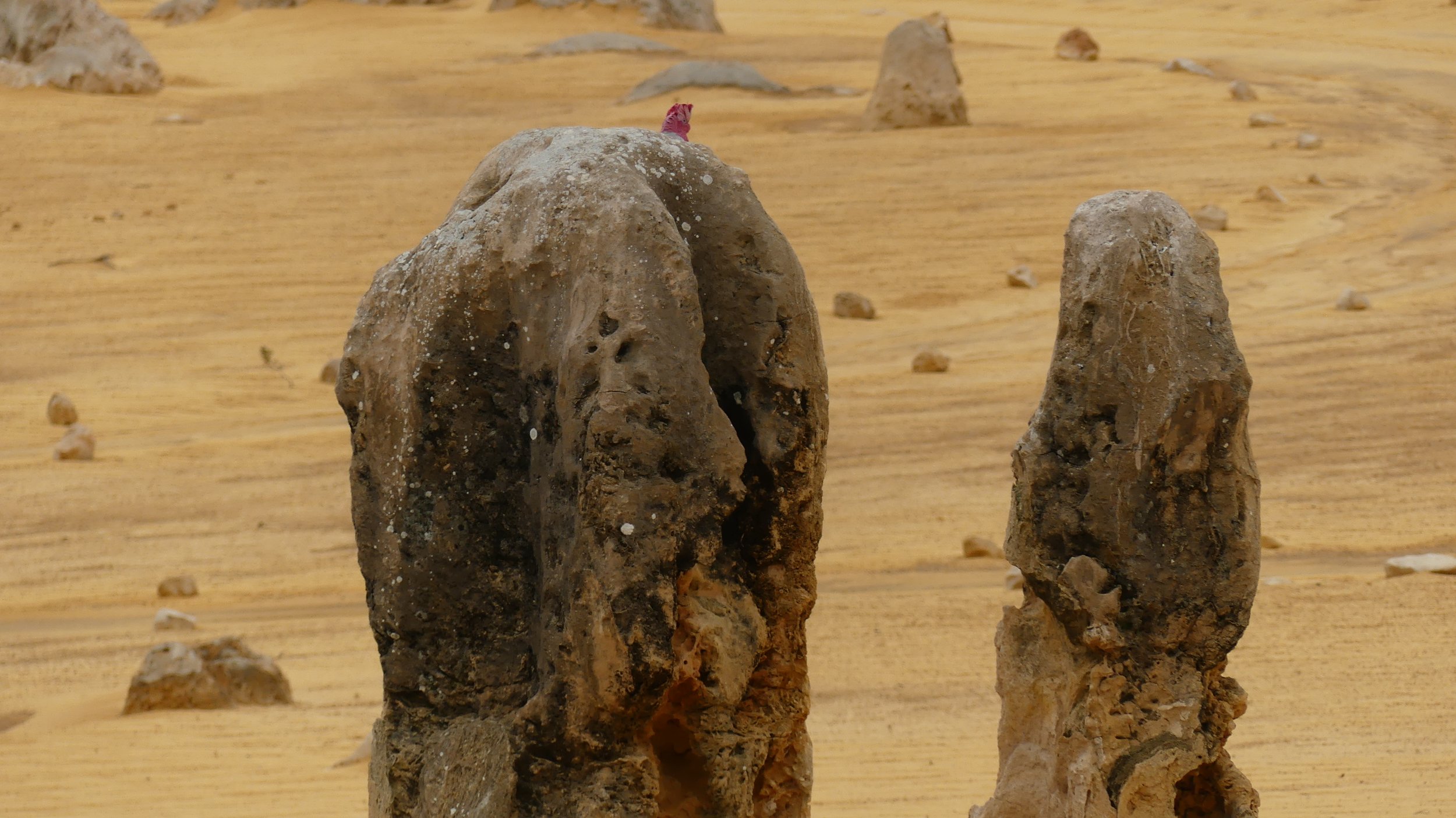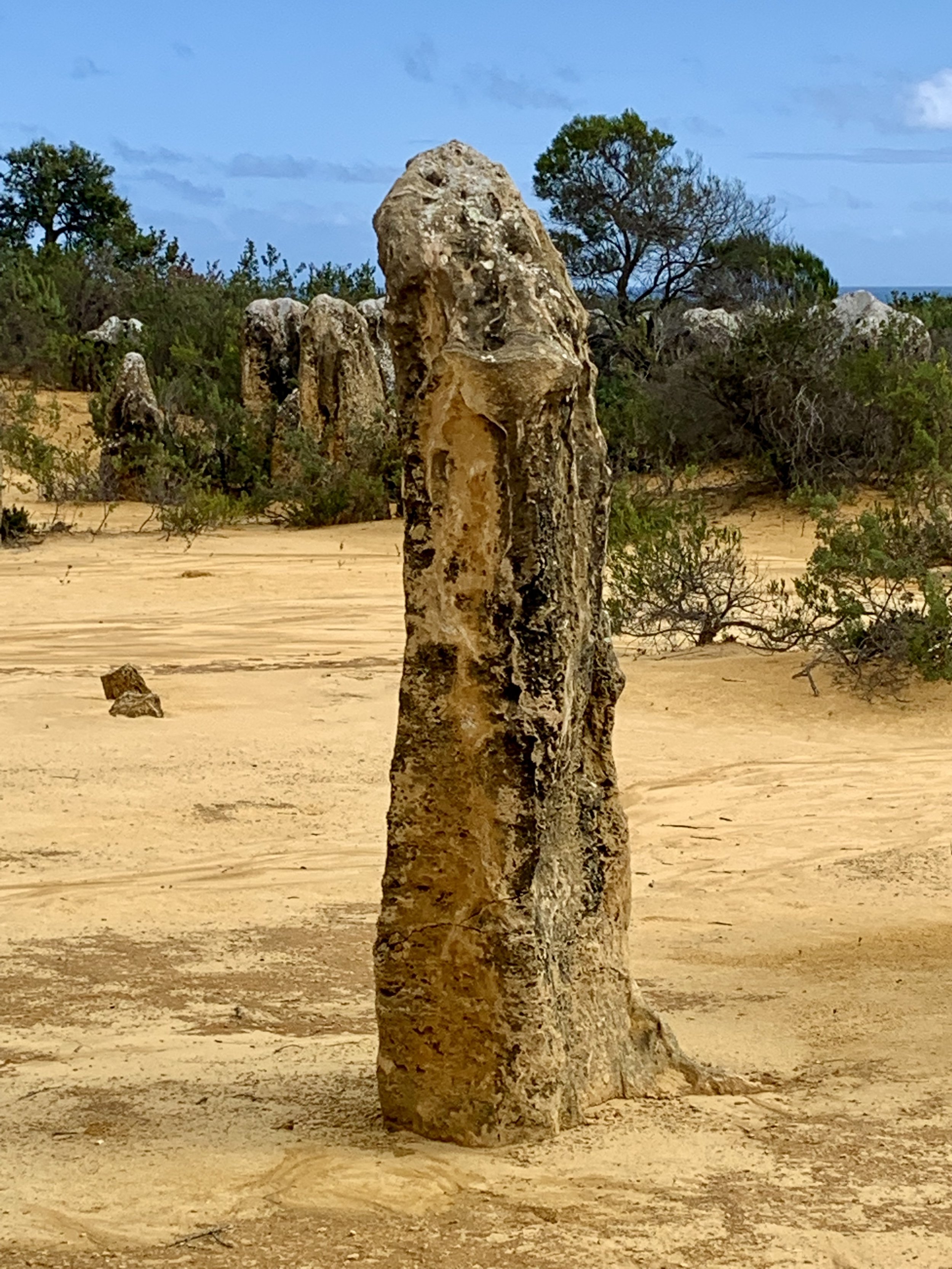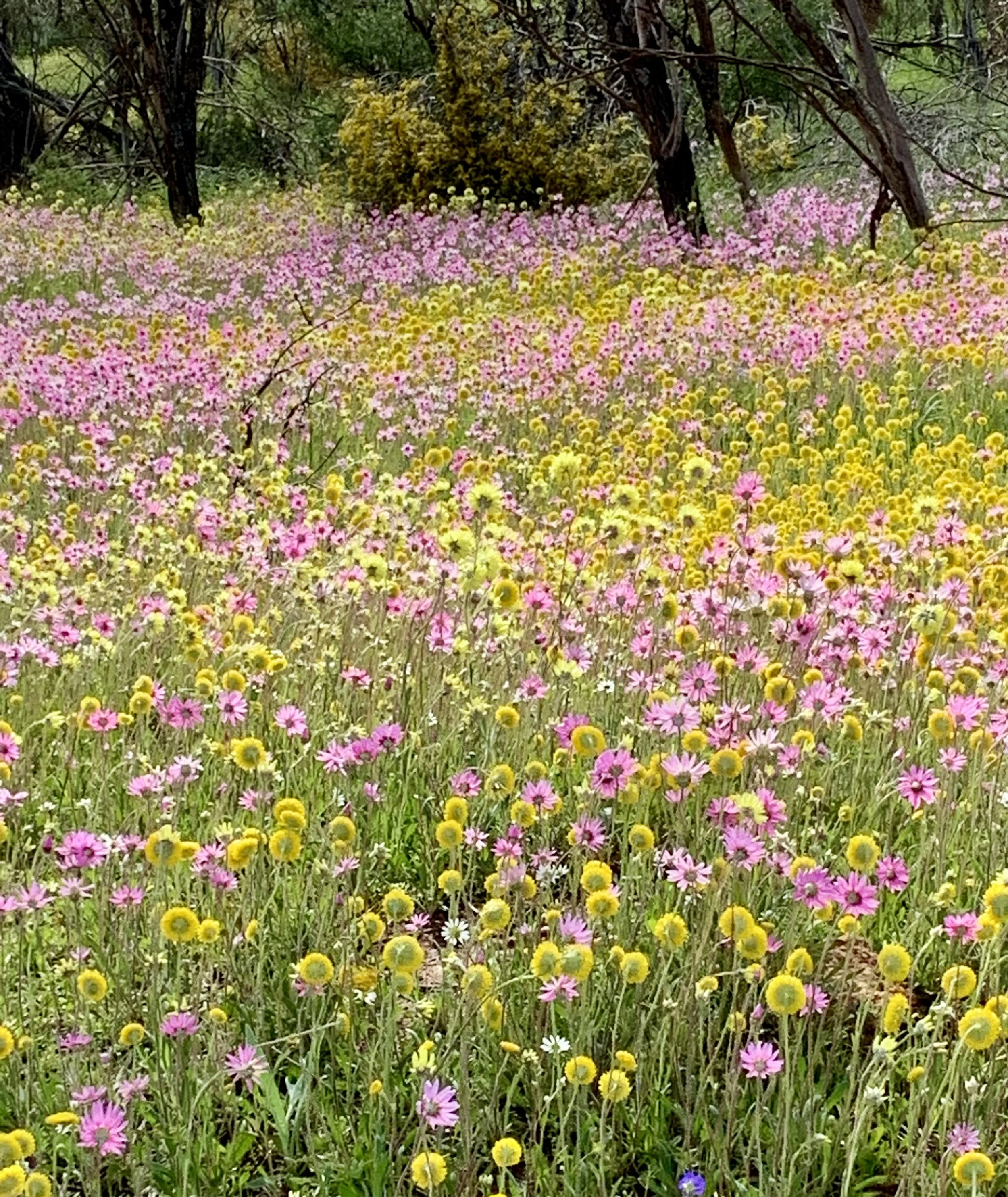Galahs on Pinnacles
Were I to make just one suggestion to travellers anywhere on earth, it would be this: if there is a desert landscape nearby, go there. Sandy or stoney; hot and dry or cold as Hades; go there. Immerse yourself in remoteness or inhospitableness, whatever forms they take. You will likely remember the experience all your life.
I struggle to adequately explain why I love deserts. Emptiness is a key factor; but immediately I’m in trouble, because I’ve often argued, when challenged by people who say, ‘But there’s nothing there’, that there are few places on Earth where there isn’t anything of interest.
From Fremantle WA we were headed north to the town of Cervantes. We preferred to follow the coast road, but it was Saturday morning in suburbia. There were lots of silly-small, too-tight-for-the-Van roundabouts, busy junctions, and sets of lights. We had to stop at Woolworths in Cottesloe for essentials, which was less of a ’mare than I’d feared, although progress was glacial. Finally, we got on to Indian Ocean Drive, Route 60.
There was no time to go into Lancelin, so we missed its white-sand beach and ‘small-holiday-town vibe’. I had imagined it might be the west coast’s equivalent of Byron Bay, but now I’d never know. I was acquiring a fatalistic approach to plans that, for whatever reason, were having to be changed: ‘Ah well, I guess I’ll never see that now’. Sigh. Move on, literally and metaphorically.
We stopped in Nilgen Nature Reserve for a picnic lunch. There were far-off dunes and very different-looking bush. Driven by prevailing winds, the dunes were slowly moving inland, suffocating vegetation in their path. Migrating dunes have long intrigued me; the relentlessness.
The Pinnacles desert is part of Nambung National Park, not far from Cervantes. The pillars provide great perches for birds. And in the shaded earth at the foot of the rock columns, and in rock crevices, small reptiles and insects find sanctuary from relentless heat.
Pinnacles from afar
I’d assumed the Pinnacles were the result of wind erosion, but it’s complicated. There are different ideas about how they came into being, but no one knows for sure, which adds to their charm.
They’re made of limestone formed between 25,000 and 30,000 years ago when the ocean receded, leaving sea-shell deposits behind. These were gradually broken down and the material blown inland where it accumulated into dunes. Rainwater percolated down through the sand, perhaps using the roots of larger vegetation as conduits. Over time, onshore winds removed the sand, leaving the old water conduits exposed to erosion by the elements.
There are variations on the above explanation, which is my attempt to summarise the theories of others. There is only so much time you can spend on research, the gist of which is that geographers and geologists don’t exactly know, or agree how this unique landscape was sculpted.
Galahs seemed to love the Pinnacles. They use holes in larger ones as nests. Australians are rude about galahs. The expression ‘Don’t be a galah’ is not intended to be a compliment. The birds may not be the cleverest of parrots, but they were the first to make an impression when I visited Aus way back. I like them: you can hardly ignore that pink, can you?
Here are more dunes consuming dunes. The bushes top right are losing the will to live.
And here are useful Pinnacle rock holes.
Cervantes was named after an American whaling vessel abandoned on this remote coast in 1847: the ship was named after the Spanish author of epic novel Don Quixote. The scale of the welcome sign was impressive: shame about the photographer (I’ve seen much better shots, taken at angles that align the panels so the ship is joined up).
Also worthy of interest was this sculpture of a West Australian Dhufish, created by the combined efforts of the Cervantes Historical Society and the Central West Coast Men’s Shed. The fish is endemic to WA, and lives close to shore and seabed. It is an indicator species for the West Coast bioregion (from Shark Bay to the Recherche Archipelago near Esperance), which will hopefully prevent it from being overfished. It’s a large tasty fish by all accounts, and something of a local icon.
Here are more glimpses of a fascinating landscape. On a touristy note, the Pinnacles off-road track had closed during recent rains, but we walked the walk. Always a privilege to see country on your feet, and without hordes rushing past.




















